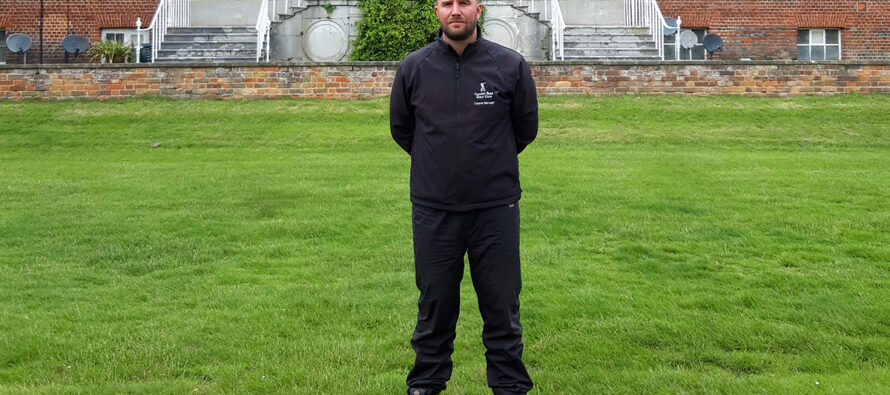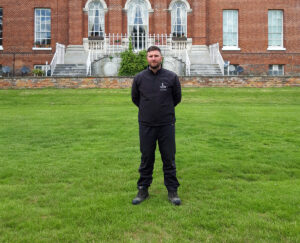A day in the life: Tom Jennings

Related Articles
The course manager at Calcot Park Golf Club in Berkshire, a Harry Colt-designed course that opened in 1930, takes us through his average day.
What time do you arrive at the club and what is your morning routine?
We are currently starting at 5:30am. Planning of the jobs is done prior to the day, as I like to have the week mapped out to ensure we’re fully prepared so when the team arrive, it’s just a case of allocating the tasks.
How many people are there in your team and do you share tasks?
We currently have nine full-time team members and two additional staff part-time. We do a lot of projects in-house so it’s important to have a team that can manage those bigger projects, as well as make sure the course is prepared to a high standard on a daily basis. I do share out all of the jobs – I like to have all of the team able to do every task. Flexibility is extremely important, and it also helps to keep the team motivated.
How do you motivate your colleagues?
I am an extremely motivated person, so I’d like to think some of my enthusiasm rubs off on them! I also know my team are great self-motivators, driven to present the best possible course. Problem solving and making improvements to the course always encourages the team to do more, and the changes we have made show their very best qualities first-hand. Outside of work, we also play golf together which provides a great opportunity to go to other courses and we obviously go for a few beers sometimes!
What aspects of your job give you the greatest satisfaction?
Watching the team get involved with projects and seeing individuals gaining their qualifications and then using them to showcase what they have learnt. Working on a golf course gives you job satisfaction every day! The course is ever-changing, and the job demands different tasks to achieve that end product. When you get there, there’s no better feeling!
And the least satisfaction?
Winters are becoming wetter, so working in these more difficult conditions when trying to complete projects can be very frustrating!
Have you attended any courses recently, and if so, what did you take away?
I recently attended the Rainbird Irrigation event at Carnoustie. I learnt so much about the new systems and how to make improvements to our own system. It doesn’t get much better than the opportunity to combine networking with others and learning at the same time.
What’s your favourite season of the year and why?
Autumn. We make so many changes to the course during the autumn and winter months, there’s lots of hard work, employing various cultural practices, but you then get to see the fruits of your labour come the spring and the course is fit and ready for the season ahead.
Are you witnessing evidence of climate change and, if so, how has your job had to adapt to changing weather patterns?
Climate change is here – drier summers and wetter winters! We are now starting winter projects earlier and focusing on getting drainage jobs done before the winter hits. During September and October we are employing lots of cultural practices to get us ready for whatever nature decides to throw at us.
Have you had to overcome any course issues with disease and / or pests?
We have an integrated disease management programme in place and are reducing leather jacket activity using nematode applications. Keeping the surfaces as clean as possible is the number one goal, and making sure we go into the spring in the best possible condition to minimise issues.
What piece of equipment would you say is the most popular and frequently used by you and your team?
I wouldn’t say there’s one piece of kit we use the most, we use everything we have and will always look at kit with extra attachments if the club consider it to be a worthwhile investment. We recently purchased a Ventrac which has been a fantastic multi-functional tool, working well alongside the Air2G2 throughout the winter months. With such a huge number of trees, investing in equipment to collect leaves as quickly and efficiently as possible has been another priority, for which we use a combination of a Trilo BL960 blower and the Trilo S4 collector. We purchased the S4 with additional flail and scarifier heads which converts the machine into one we can use for jobs around the course all year round.
With a growing focus on sustainability, do you deploy any sustainable practices in the management of your course?
We have started to introduce a number of things to improve the club’s sustainability, one example being growing more eco-grass areas with wildflowers to improve biodiversity. We are currently designing a new irrigation system which will use underground storage chambers to hold collected surface water. This winter we have carried out a large lake restoration project – removing silt and improving the habitat around the lake with a new planting scheme. Using a local fishery, we aim to manage the fish stocks for the future.
What do you do to support wildlife?
We are adding bug hotels to certain areas of the course, adding more bird boxes around the estate and as already mentioned, re-stocking the lake with fish and sowing wildflowers. We are keen to improve this area of what we do, attracting more wildlife and better supporting what we already have.
What are the technological developments that you feel have been the most important in your career to date?
I use a POGO moisture meter daily to help me manage my turf – collecting data to analyse and assess when my next applications are due. It’s been a particularly important tool already this year as we have implemented a more complex wetting agent programme for our fairways. The data it gives us is invaluable, with records quickly and easily stored on my laptop for our own reference, or to be used as a source of data to inform decisions by the golf course committee.
Do you use social media professionally and what do you think this contributes to the industry?
Yes, I use social media and run the Calcot Park Greenkeepers Instagram page on which I share lots of what we’re doing day-to-day including what machinery we’re using and what projects we’re working on. Showing off before and after images is a must! It’s always good to be able to look back at the work and see how far we have come and the improvements we have made. I like members to see what goes on behind the scenes and what goes into the projects. It also provides a great platform for other greenkeepers and course managers to contact me or offer advice or even ask questions. There are so many course managers I’ve spoken to on social media that I’ve actually never met in person!
How would you improve the greenkeeping industry?
Networking is important so I think the industry would benefit from more education days and events. I have attended many events myself in the last few years which have helped me improve the course I run, and make you think about where you want to take the course in the future.
What advice would you give to a young greenkeeper starting out today?
The advice I would give is to take in as much as you can, gain as many qualifications as you can and network as much as possible. I was fortunate enough to learn my trade at Swinley Forest Golf Club and gained many valuable qualifications. These will help you progress, but also you will never stop learning in this industry. This is why I am very keen for my team to enroll on training courses, to help build their own portfolios and greenkeeping techniques.
How do you spend your leisure time?
I love spending time with my family and bringing up my little girl Beau with my wife. Family is everything to me and giving them the best life is all that matters!


























